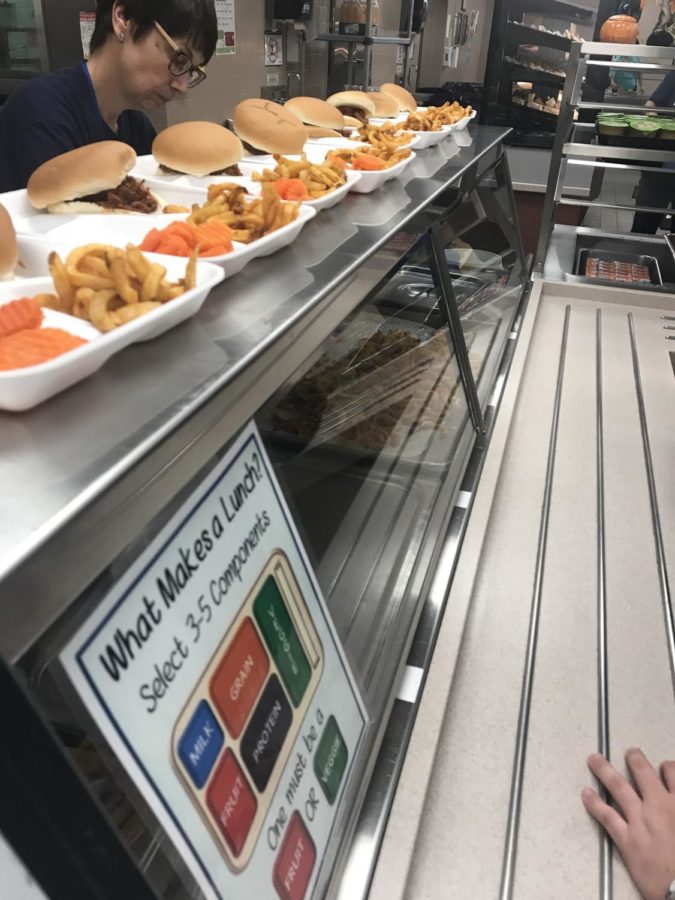This is how lunch is chosen?
October 9, 2018
Food: a big part of America’s culture. There are endless options wherever you go, whatever your preference, except at school, where the choices are predetermined by Solon Schools’ Faculty. Whether something is too sweet, too salty, too heavy or too healthy, getting the menu right is the challenge in Solon’s cafeterias.
What students don’t realize is that the foods offered are highly regulated at both the state and federal levels. There are requirements schools must meet, such as components which include: a protein, vegetables, dairy, fruits and grains which must be incorporated into each meal. Joanne Samuels, Solon’s District Food Service Director, says that creativity is needed to make sure the students continue to come back to buy lunch.
“You come up with an idea and hope [students] like it” Samuels said.
Ideas are shared through Solon Schools’ involvement in a co-op made up of all the food service directors in Northeast Ohio. The group of directors meet quarterly to sample products and make a group decision as to whether or not they should take the meal ideas back to their schools.
A lot of the decision making is based off of major food trends, eye appeal and students’ likes and dislikes. The group takes many ideas from outside sources like local restaurants and then decide how to integrate them into school meals.
When lunches accumulate to between 300-450 sold daily, the hope is that majority of the kids are getting their favorite meals more frequently than not.
“I think that they probably have a good rotation of the foods,” junior Nadia Gibson says. “But it would be nice if the students got a say in the rotation or just lunches in general”
To meet such requests, meal options are then tested in the Family Consumer Science classes offered at the high school and middle school. The students who try the new foods, are then to complete a survey explaining why they liked or disliked it in order to help the schools choose which meals to add to the menus.
“If we don’t know why, it’s hard to decide whether to keep a product or not” Samuels says.
The new lunch is then implemented into the six week menu cycle. During this time, the co-op receives feedback about student reactions to lunches: how many kids buy a lunch that day compared to other days, what the kids take when offered and how much is consumed.
Cafeteria staff member Mary Wegierski, and other employees are encouraged to ask for student responses and report back to the Food Service department about their findings.
“[I would] stay with things I noticed the kids like: what was most popular, and maybe eliminate the stuff that wasn’t so popular,” Wegierski says. “ Like when we have the green fried beans with the Mexican meal, a lot of kids don’t get those, so maybe [we shouldn’t] make as many”
Additionally, the food service department has been enhancing the focus on using more wholesome ingredients in each of the foods that they offer. They have even entered into a partnership with Farm Fair to get fresh fruits and vegetables when they are available.
According to Samuels, one of the elementary schools went to the point of creating a garden. This allowed the kids to see where the foods come from and what it looks like. This way, when they saw foods that utilized these products on the menu, they were more apt to eat them.
The next step for Solon’s cafeterias is incorporating natural products like these into daily options that work with personal restrictions. Many students are raised as vegetarian, vegan or with other dietary restrictions. With only one lunch option every day, it limits the audience the schools have the potential to reach.
America’s culture is always changing, and so is what we put into our bodies. The students at Solon High School trust the cafeteria staff to make sure they are each getting what they need in the meals prepared for them. And this is how it’s decided.

